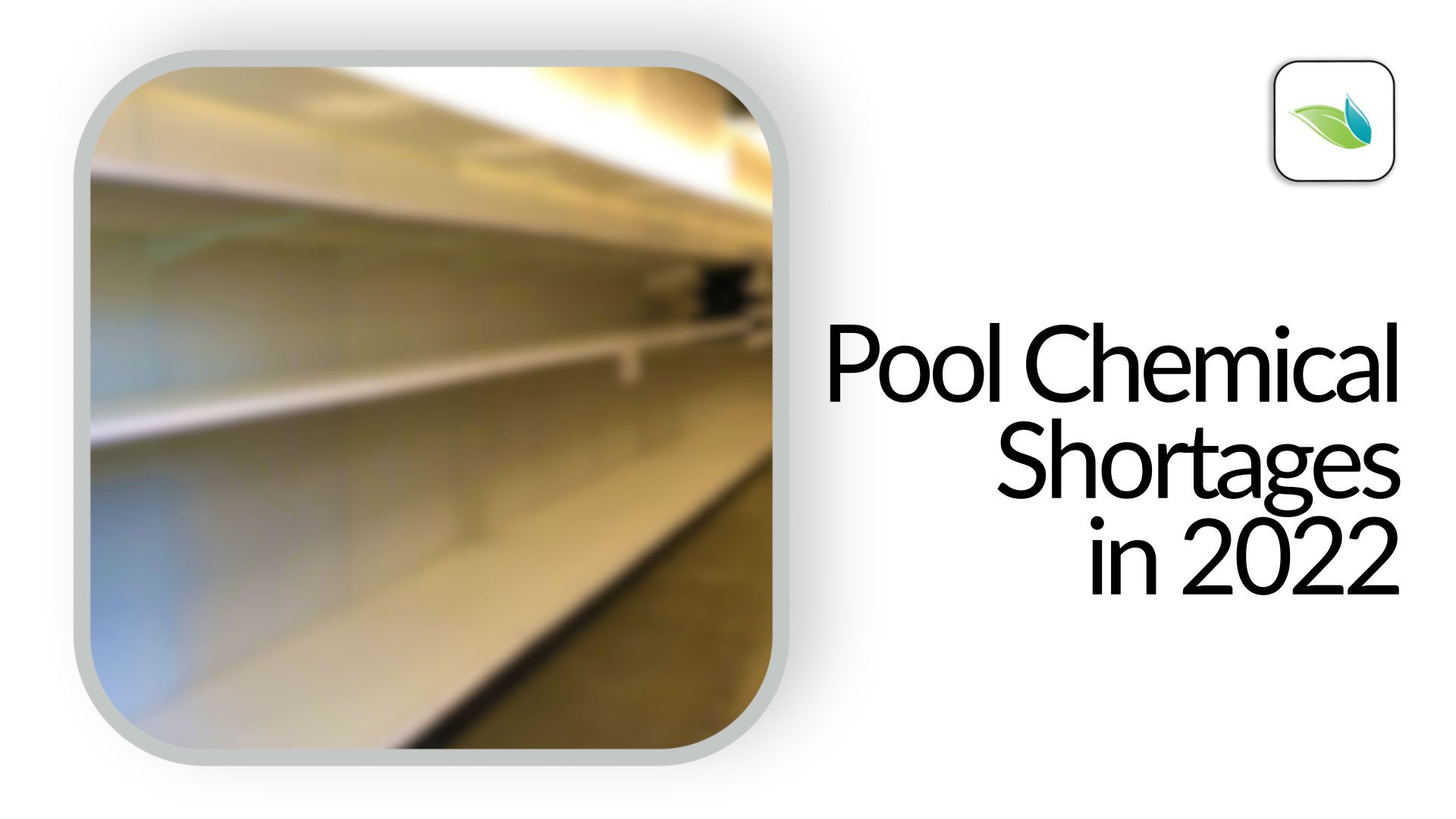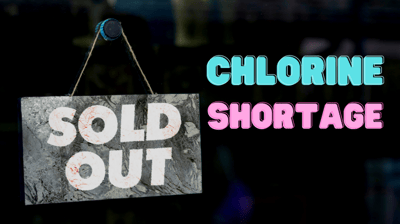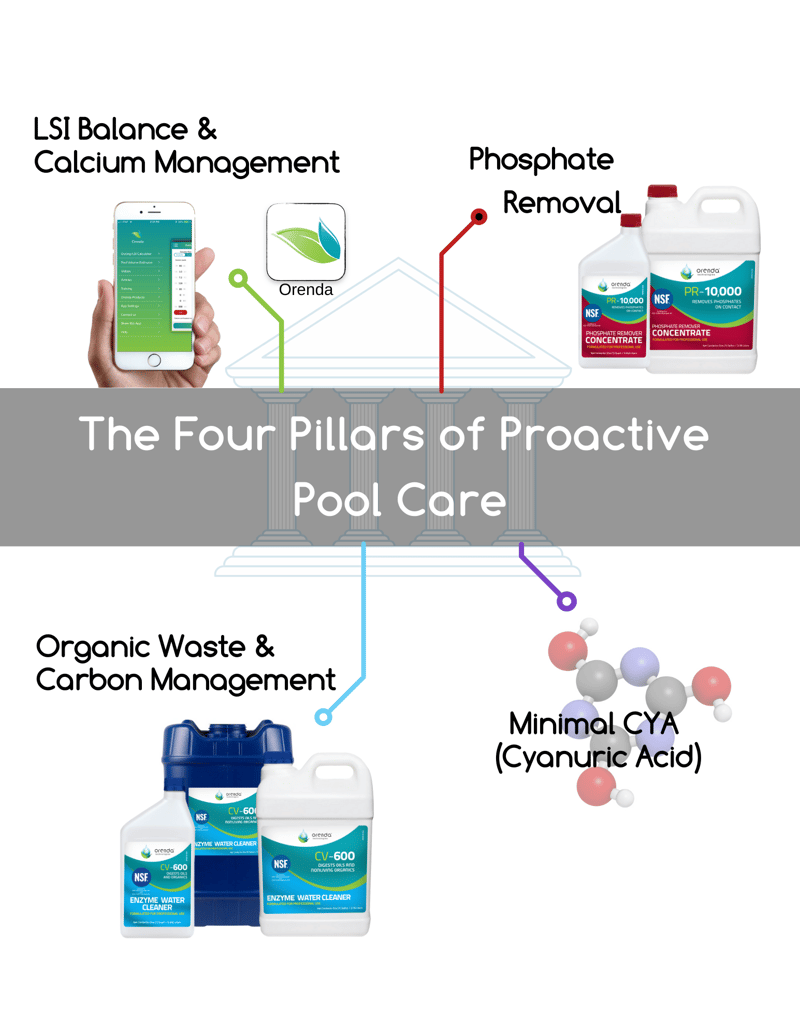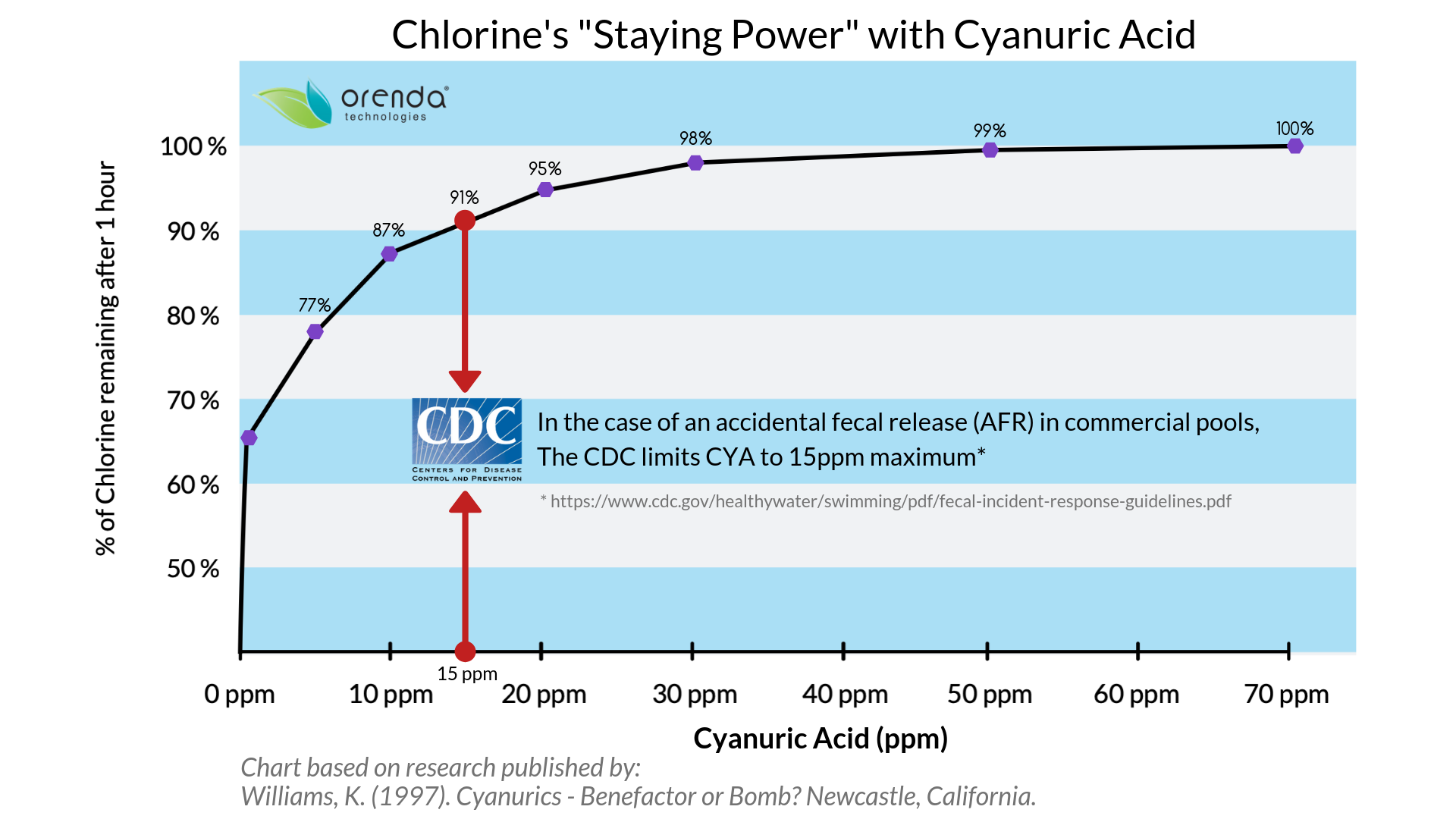Pool Chemical Shortages in 2022

Just like 2021, supply-chain and labor shortages are causing uncertainty in the economy. But amidst the unknowns, a few things are certain, and this article is here to help you plan for them and adapt accordingly.
Covered in this article:
- Pool chemical supply shortages
-
- Trichlor
- Liquid Chlorine
- Muriatic Acid
- Cal Hypo
- Algaecides
- Cyanuric Acid (CYA)
-
- Alternatives and strategies
- Chlorine demand
- Chlorine efficiency
- Acid demand
- Cyanuric Acid (CYA)
- Conclusion
Pool chemical supply shortages
Since August 2020, Trichlor has been in short supply. This was mainly due to the hurricane-caused destruction of a major trichlor manufacturing plant. That plant is still not rebuilt as of now, so the pinch on trichlor supply continues today.
 The shortage of trichlor has forced pool pros and homeowners to switch to non-stabilized chlorine. We advocate for non-stabilized chlorine anyway, so that's good news. As expected, demand for those non-stabilized chlorine types–mainly liquid chlorine–has increased substantially. Anyone paying attention noticed multiple price increases in 2021 alone. On top of that, the chlorine shortage led to a shortage of muriatic acid too.
The shortage of trichlor has forced pool pros and homeowners to switch to non-stabilized chlorine. We advocate for non-stabilized chlorine anyway, so that's good news. As expected, demand for those non-stabilized chlorine types–mainly liquid chlorine–has increased substantially. Anyone paying attention noticed multiple price increases in 2021 alone. On top of that, the chlorine shortage led to a shortage of muriatic acid too.
As each commodity became harder to get, consumers shifted to alternatives, which then caused their demand to rise. Price increases followed. 'Supply and demand' is Economics 101, and we don't need to elaborate on it. Let's focus on specifics in the pool industry. We have chosen not to talk about pool equipment and building materials for simplicity's sake.
Here are just some of the chemicals that will be harder to get in 2022:
-
Trichlor. Yes, the shortage continues. We expect it will continue for another year or so, or until the trichlor manufacturing plant is back up and running at full speed. Pre-covid, a bucket of trichlor tabs could be purchased at almost any pool store or wholesale distributor. This year, that may not be the case.
-
Liquid chlorine. Yes, it will be harder to get liquid chlorine in 2022. Not only because the finished product itself is more difficult to get, but because elemental chlorine itself is harder to get. This elemental chlorine shortage is largely due to increased demand for other chlorine-consuming industries–namely PVC pipes/fittings and household cleaning products. Yes, we were surprised to learn just how much the PVC industry requires chlorine (PVC stands for polyvinyl chloride).
-
Muriatic acid. The same companies that produce and bottle liquid chlorine often produce and bottle muriatic acid too. Shortages up and down the supply chain led to issues producing muriatic acid. When summer 2022 hits and full demand resumes, expect shortages and price increases.
-
Cal Hypo. Granular cal hypo shock was not as dramatically impacted by COVID supply chain shortages, but it's safe to expect some in 2022. This is not the fault of the manufacturers, it's just the reality of manufacturing right now. Cal hypo tabs and briquettes seem to be able to be produced fine for now, but again, we'll see what happens this summer, as more and more pools are having to switch from liquid chlorine to cal hypo.
-
Algaecides. As you may already know, we at Orenda do not encourage the use of algaecides for two reasons. First, every algaecide leaves behind a long-term byproduct of some kind, and part of the Orenda philosophy is no long-term byproducts. Second, free chlorine–specifically Hypochlorous acid (HOCl)–is the best algaecide (by far). Nevertheless, if you do use algaecides, we have heard they will be harder to get in 2022. Especially sodium bromide.
-
Cyanuric Acid (CYA). It's not only trichlor in short supply, but we have heard that regular CYA will be too. Raw materials needed to manufacture cyanuric acid are not easy to get these days. This potential CYA shortage is especially important for outdoor commercial pools using liquid chlorine or cal hypo feeders. Most residential pools are small enough that a few weeks of using trichlor or dichlor can get CYA levels up to the optimal 30 ppm - 50 ppm. Larger pools tend to use granular CYA, so be aware of this potential shortage.
In general, these shortages either stem from a lack of people or raw materials. And often it's a combination of both. For instance, if raw materials are imported from overseas, you can bet those products will be more expensive and harder to find in 2022.
Alternatives and strategies
 The most obvious way to overcome the shortages this year is to practice proactive pool care. Address the four action steps we discuss in our Four Pillars, and prevent problems before they start. It is much more affordable and easier to prevent problems than to fight them. Using more products/chemicals is NOT the only path to success. We believe in minimalism. We want you to have the purest water possible with the fewest chemicals possible. Remove factors from the water, rather than adding more in.
The most obvious way to overcome the shortages this year is to practice proactive pool care. Address the four action steps we discuss in our Four Pillars, and prevent problems before they start. It is much more affordable and easier to prevent problems than to fight them. Using more products/chemicals is NOT the only path to success. We believe in minimalism. We want you to have the purest water possible with the fewest chemicals possible. Remove factors from the water, rather than adding more in.
So with that in mind, here are some ideas to address the following items:
Chlorine demand
From our perspective, most of these shortages can be managed by supplementing chlorine. Specifically, supporting chlorine against the oxidant demand. We have talked about the oxidant demand in many of our blogs, and how the most prevalent oxidants are non-living organics. If you properly manage these oxidants, the demand for chlorine can be greatly reduced in most swimming pools. That translates to better water quality and [usually] less chlorine consumption.
You can supplement chlorine with CV-600 or CV-700 enzymes, and/or a secondary oxidation system like Ozone or AOP. You could also use a UV system for secondary disinfection, just know that it is not an oxidizer. It will help kill living contaminants but does nothing against non-living oxidants like sunscreen.
Chlorine efficiency
Another way to supplement chlorine is to improve its efficiency by removing phosphates and maintaining phosphate levels below 500 ppb. Using PR-10,000 is a surefire way to reduce phosphates on contact. And you do not need to use a lot of phosphate remover to benefit from it. Even small doses can make a noticeable improvement to water clarity and chlorine efficiency.
As far as algaecides go, you shouldn't need them anyway if you have optimized chlorine by addressing the oxidant demand and phosphates. Chlorine is the best algaecide, it just needs help with the non-living stuff that takes away from its primary job of disinfection.
Acid demand
As it pertains to a shortage of muriatic acid, seek to contain pH instead of trying to control it. And if you cannot find any acid, consider injecting CO2 to reduce pH, or switching to sulfuric acid or dry sodium bisulfate. Just be aware that these two acids introduce sulfates to your pool, so regular dilutions should be factored in to avoid calcium sulfate scale.
Containing pH following the Orenda strategy has greatly reduced acid consumption for most of our customers. And of course, reducing acid use also reduces the toll on total alkalinity, which means you will need less sodium bicarb to replenish it. Savings all around.
Cyanuric acid (CYA)
Finally, let's talk about the shortage of CYA. There is no replacement for having some cyanuric acid in an outdoor pool. Fortunately, however, you don't need as much as you might think! We've covered this at length in several other blogs, but here's a quick chart to jog your memory:

As you can see, even low levels of CYA can give you a high percentage of sunlight protection. If you are unable to get enough CYA this season, try dividing what you are able to get into more pools and maintain lower levels of CYA. Most objections we get about this concept have to do with not being able to hold chlorine in the middle of summer. Hey, we get it. But water temperature has nothing to do with CYA's ability to protect chlorine. A little bit of CYA goes a long way. To get chlorine to last longer, address the oxidant demand, as mentioned earlier.
Conclusion
It may seem like a doomsday scenario when there's not only a shortage of every type of chlorine but also CYA and algaecides. We understand, and we empathize with you. It's stressful. When we speak to pool owners and service professionals about these challenges, it's hard to remain optimistic going into another season. And yet, we are optimistic.
Yes, change is often painful, and these last two years have been full of forced changes. But we choose to look at these forced changes as an opportunity for our industry to be better and more efficient.
We could give specific examples of pool companies and countless homeowners that had used algaecides and trichlor for years and years before switching to the Orenda program. They're pleasantly surprised to realize just how simpler water can be when you address the root causes of issues.
So stay focused on the most likely contaminants that will get into your pool. Focus on the oxidant demand and never let it overpower your chlorine. Focus on keeping your CYA to a minimum, and keeping phosphates below 500 ppb. If you do these things, you can (and will) conquer the 2022 pool season. Good luck this season, and if you need guidance, take our free Orenda Academy™ programs to learn more.
